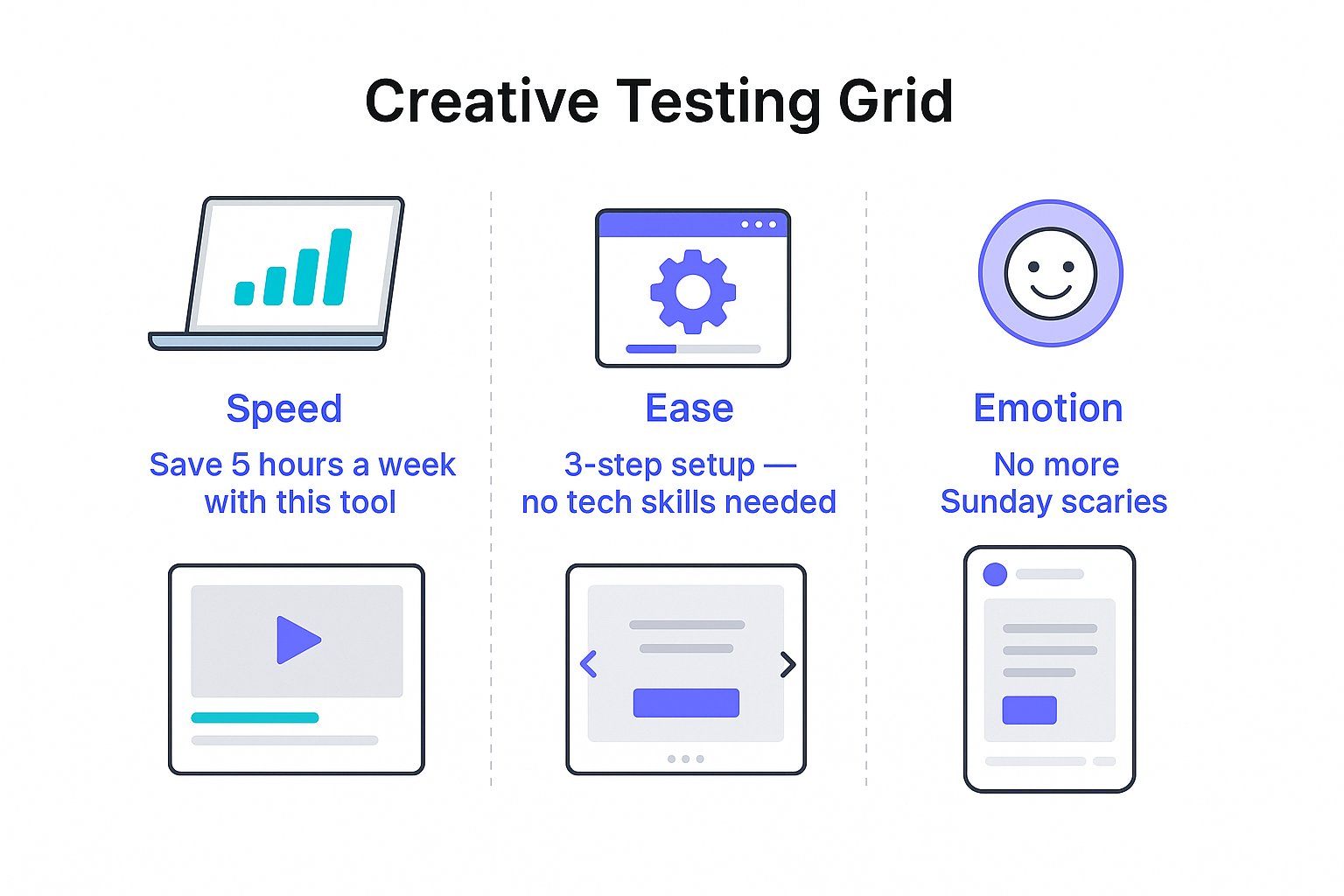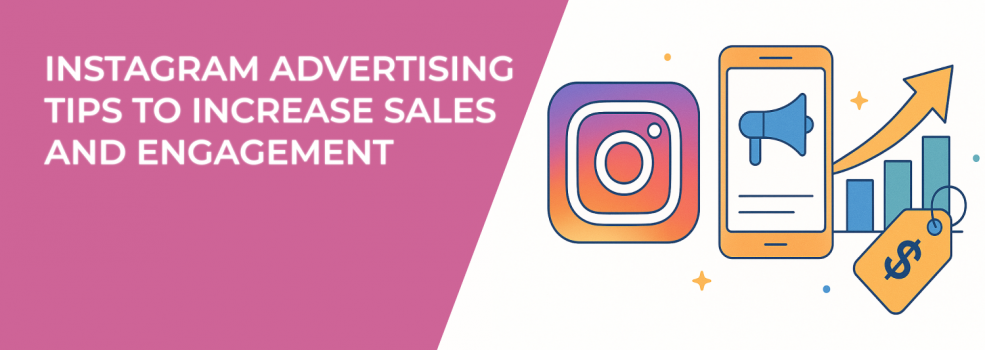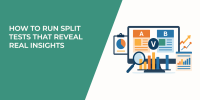If you're still running Instagram ads based on broad interests and repurposed Facebook creatives — you're leaving money on the table.
Instagram rewards precision: the right offer, to the right user, at the right moment. And as competition gets fiercer, advertisers who rely on guesswork will get buried under higher CPAs and stagnant ROAS.
These aren’t surface-level tips. This is a practical, tactical guide to help you build smarter campaigns, reduce wasted spend, and create ad experiences people actually respond to.
Want more foundational strategies? Check out How to Use Instagram Ads for Small Business Growth in 2025.
1. Use Engagement Intent Signals to Pre-Qualify Audiences
Don’t just retarget users who visited your site — retarget based on how they interact with Instagram content in-platform.
Here’s how to build intent layers using Meta’s engagement tracking:
-
Video View Thresholds
Instead of retargeting all viewers, create custom audiences based on watch time. A 75% video viewer is far more invested than someone who watched 3 seconds. Build separate funnels for:-
25% viewers: colder, upper-funnel engagement.
-
50% viewers: warm audience, likely curious.
-
75%+ viewers: high intent — show product comparisons, reviews, or discounts.
-
-
Saved Posts Engagement
People who save posts signal high research or purchase intent. Create content that encourages saves (e.g., carousel tutorials, pricing breakdowns, tips) — then build saved-post engagement audiences and follow up with personalized ads. -
DM Interactions
If users message your brand, they’re past the discovery stage. Create custom audiences from recent messengers and serve ads that reduce friction — limited-time offers, fast FAQs, or shipping incentives.
Why it works:
These actions aren't passive. They signal thought, curiosity, and comparison — and they map directly to mid-funnel movement.
For more advanced targeting and sequencing strategies, read The Secret to Retargeting Success on Instagram: Best Practices.
2. Deploy Micro-Testing Frameworks for Creative Variation
Instead of A/B testing one variable across a single ad set, structure creative tests to isolate micro-insights.

Here’s a testing grid you can use:
-
Same Product, Different Value Propositions
Test angles like:-
Speed ("Save 5 hours a week with this tool").
-
Ease ("3-step setup — no tech skills needed").
-
Emotion ("No more Sunday scaries").
-
-
Same Visual, Different Hooks
Use the exact same creative asset, but change only the first line of copy. This helps you identify what draws the scroll-stopper attention. -
Same Angle, Different Formats
Try a talking-head Reel, a testimonial carousel, and a lo-fi Story ad — all using the same message. Analyze which format delivers better CTR and conversion per placement.
Execution tip: Run these tests in separate ad sets for clean results, but limit delivery overlap by capping budgets or excluding audiences if needed.
3. Craft Native-Looking Ads That Fit the Feed, Not Break It
Instagram users can smell an ad from a mile away. Your job? Blur the line between content and promotion.
Here’s what advanced advertisers do to create native-style ads that outperform polished brand campaigns:
-
Use Social Proof Over Branding
Replace logo-heavy intros with real customer statements or screenshots. A testimonial reel starting with “This actually worked…” outperforms a product reel that opens with a brand logo. -
Match the Look of Organic Content
For Story ads: use casual fonts, GIFs, and emojis — the kind users are already used to seeing from friends and influencers. -
Mimic the Platform's Native Features
Run carousel ads that feel like swipe-through tutorials. Or build Reel ads with trending sounds and caption overlays that match user-generated styles.
Why it matters:
When your ad feels like part of the user's feed — not an interruption — performance metrics jump across the board: lower CPM, higher engagement, and more qualified clicks.
Need help designing high-performing Stories? Don’t miss How to Create Stunning Instagram Story Ads That Your Audience Will Love.
4. Use Content Layering to Improve Conversion Sequences
If your funnel only consists of one ad type, you’re oversimplifying the customer journey. Instagram users usually need context before commitment.

Structure your ad sequences with content layering, like this:
-
Hook Layer (Top of Funnel):
Use viral-style content — skits, bold claims, shocking stats — to drive cheap engagement and qualify your audience. -
Value Layer (Middle of Funnel):
Serve educational or problem-solving content. Think: product walkthroughs, comparison guides, “how it works” Reels. -
Proof Layer (Bottom of Funnel):
Use UGC, video testimonials, review screenshots, or “what I wish I knew before buying” content to close the loop. -
Offer Layer (Conversion):
Finally, deploy urgency-based ads with clear CTAs — free shipping, limited-time bundles, or seasonal drops.
Pro tip: Use frequency capping on mid-funnel layers so you don’t burn out audiences while nurturing intent.
5. Build Lookalikes From High-LTV Customer Subsets — Not All Buyers
Most brands make the mistake of building lookalikes from all past customers. This flattens the data and weakens predictive accuracy.
Instead, segment your highest-value buyers, and build your lookalikes from that top slice.
Here’s how to define a high-LTV seed audience:
-
Customers who made 3+ purchases within 90 days.
-
Customers who referred others via code or link.
-
Customers with high AOV and low return/refund rates.
Use internal tagging or export segments based on real purchasing behavior. Then feed those into Meta to build better-performing lookalikes.
Result:
Meta’s machine learning will find users who resemble your best customers, not just anyone who bought once during a flash sale.
If you're scaling aggressively, also check Scaling Instagram Ads While Maintaining ROI: What You Need to Know.
6. Use Data-Led Dayparting — Not Just Broad Scheduling
If you’re running your ads 24/7 on autopilot, you’re wasting budget.
Instagram behavior changes based on time of day and day of week — especially when your audience spans multiple time zones.
Here’s a smarter approach:
-
Pull Instagram Insights to find peak engagement hours by weekday.
-
Use ad scheduling to restrict delivery to windows where conversions are historically higher (not just impressions).
-
Cross-check against Meta Ads Manager reporting — compare CTR and cost per result by hour/day.
Execution idea: For high-ticket or B2B offers, limit delivery to weekdays from 8 AM–6 PM in your top 2–3 buyer regions. For impulse buys, evenings and weekends often perform better.
Final Takeaway
Instagram ads work when they:
-
Reach the right people.
-
Show the right message.
-
Appear at the right time — and in the right format.
The difference between an ad that gets ignored and one that drives real ROI isn’t the size of your budget. It’s how well you understand user psychology, behavior signals, and platform-specific tactics.
So stop following “best practices” written for 2019. Start building campaigns based on real behavior, sharp targeting, and conversion layering.
You’ll spend less. You’ll convert more. And you'll actually scale.
Want to refine your strategy further? Explore 2025 Instagram Ad Strategy: What Separates Good from Great.

